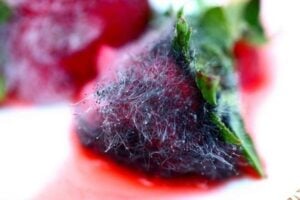10 Scary Food Facts from the FDA

If you think about it, when dealing with produce that grows in dirt, is harvested in a field and is packed in a big warehouse, it’s nearly impossible to ensure that every single bug that ever climbed a stem or nibbled a leaf gets removed before the veggies are shipped to your grocery store. That’s why the FDA has published a guide called the Defect Level Handbook that states exactly how much contamination is acceptable.
And, okay, at these levels, every single one of these things is harmless. But they’re pretty disgusting, nonetheless.
- Canned pineapple can pack in up to 20% moldy fruit.
- Frozen broccoli must have an average of no more than 60 aphids or thrips or mites per 100 grams.
- Oregano can legally contain up to 1,250 insect fragments per 10 grams.
- Peanut butter can contain one rodent hair per 100 grams.
- Cinnamon can carry up to 1 milligram of animal excrement per pound.
- Berries can harbor up to 4 larvae per 100 grams.
- Up to 10 percent of canned asparagus can harbor asparagus beetles or egg sacs.
- As much as five percent of your maraschino cherries can legally contain maggots.
- Tomato paste is considered bad only if more than 45 percent contains mold.
- Chocolate is tainted when it averages 60 or more insect fragments per 100 grams.
Is ignorance bliss, or is it better to know what you’re eating? Either way, now that you’re thorougly grossed out, the FDA would like you to know:
It is incorrect to assume that because the FDA has an established defect action level for a food commodity, the food manufacturer need only stay just below that level. The defect levels do no represent an average of the defects that occur in any of the products—the averages are actually much lower. The levels represent limits at which FDA will regard the food product “adulterated.”
So, just try to remember that the next time you take a big bite of chocolate or smear your bread with peanut butter…
image: Pink Sherbet Photography

